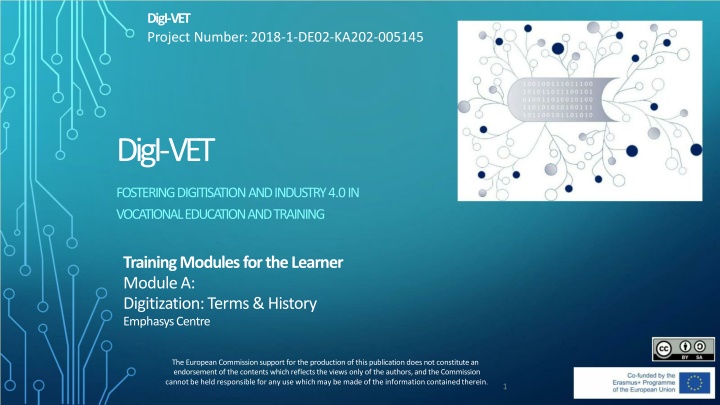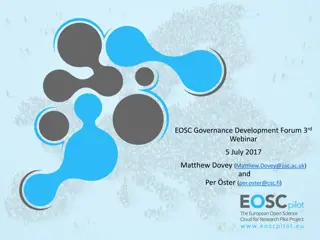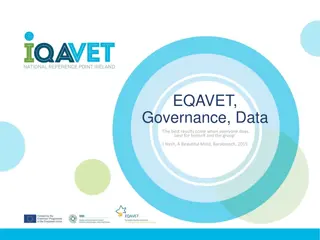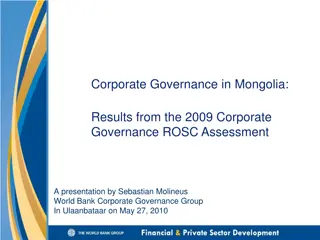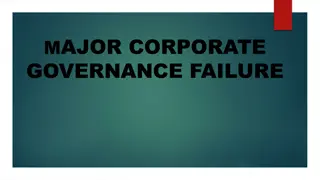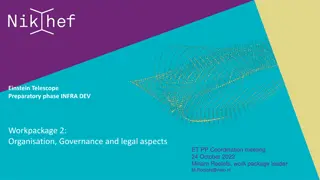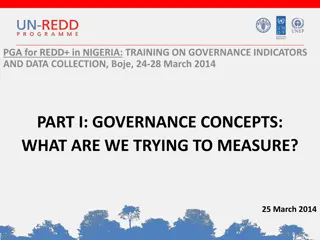New Economic and Social Governance of the EU
This content explores the changes in the economic and social governance of the EU, discussing the impact of past architecture, upcoming changes, COVID-19 responses, one-off instruments, remaining aspects, and future effects on the EU's financial landscape. It addresses key elements such as reference values, government expenditure benchmarks, employment guidelines, and more.
Download Presentation

Please find below an Image/Link to download the presentation.
The content on the website is provided AS IS for your information and personal use only. It may not be sold, licensed, or shared on other websites without obtaining consent from the author.If you encounter any issues during the download, it is possible that the publisher has removed the file from their server.
You are allowed to download the files provided on this website for personal or commercial use, subject to the condition that they are used lawfully. All files are the property of their respective owners.
The content on the website is provided AS IS for your information and personal use only. It may not be sold, licensed, or shared on other websites without obtaining consent from the author.
E N D
Presentation Transcript
DigI-VET Project Number: 2018-1-DE02-KA202-005145 DigI-VET FOSTERING DIGITISATION AND INDUSTRY 4.0 IN VOCATIONAL EDUCATION AND TRAINING Training Modules for the Learner Module A: Digitization: Terms & History Emphasys Centre The European Commission support for the production of this publication does not constitute an endorsement of the contents which reflects the views only of the authors, and the Commission cannot be held responsible for any use which may be made of the information contained therein. 1
Agenda of Module A: Digitization: Terms and History 1. Introduction 2. Helpful Terms 3. History of Digitisation 4. References 2
1. Introduction What is Digitisation? - Digitisation is the process of converting information from a physical format into a digital one. What is Digitilisation? - Digitalisation is the process of using digital data to simplify how you work and therefore improve business processes. What is Digital Transformation? - Digital transformation is the process of using digital technologies to create new or modify existing business processes, culture, and customer experiences to meet changing business and market requirements. 3
Have a look at this video on Digital Transformation Activity https://www.youtube.com/watch?v=508CR1fd8ws 4
Task Choose the correct answer TASK https://h5p.org/node/918934 5
2. Terms Cloud: Things are referred to as cloud-based if the electronic information is stored in and retrieved from a shared storage provider.The cloud is like an offsite collections store that you share with other people. Collections management: The practices and procedures implemented by a museum in acquiring, documenting, handling, accessing, storing, securing, lending, conserving and disposing of collection items. Collections Management System: The system that a museum has in place to record and manage information about its collection. Data: Information stored and transmitted in an electronic format. Digital: Although it is widely used, the term digital is often not well-defined. Generally, it refers to the use of technology (computers, IT equipment, tablets, mobile devices, audio visual equipment) to support some area of museum work. 6
Digital assets: Digital materials created or owned by your institution. See also the section on Digital Asset Management . Digital Asset Management: The process of creating, storing, retrieving and making digital assets available for use. Digital Asset Management System: Also referred to as a DAMS , this is the combination of software (computer programmes) and hardware (servers and computers) that you use to create and store digital assets. Digital preservation: The practice of ensuring that the digital files and content you produce continue to be accessible and usable in the long-term. Metadata: Metadata is structured information about your digital content. It bears the same relation to your digital files as your catalogue record has to the physical objects in your collection. 7
2. History of digitization The Introduction to the Computer The first computer was built in 1937. Many more variations of the computer were made in the next decade mostly due to military incentives. These devices were used for processing and didn t have an operating system. In the 1950s, computers started to quickly advance. They included numerous program languages, memory and operating systems, printers, and media storage in tapes and disks. By 1962, the term database was added to the Oxford English Dictionary as a description for storing media. 8
Digital Imaging The CCD (Charged-coupled device), was the first technological equipment to be converted into digital signals, in 1969. This effected digital cameras and digital imaging and was especially helpful to the medical industry. The first digital camera was created 6 years later by Steven Sasson, and photos could now be stored though a computer memory without the use of film. Bringing Digitisation into the Home The first personal computers were introduced to the world in 1975. This made digital storage even more accessible. CDs (compact disks), were later introduced to the market in 1982 and by 1988 their sales overcame the sales of vinyl records. 2 years later (1986), the JPEG format was introduced to the market as was presented as a way to reduce image files. By doing this sending and receiving images was an easier process. By then, compressed data had become normal to the public. 9
The World Wide Web In the 1960s, the world was introduced to the Internet, specifically organisations such as the military were developing internetworking. That was when the development of digitisation had ascended as people had started to email, send instant messages, created blogs, websites and forums. And in the 1980s the World Wide Web had become more accessible than ever. In 1994 banner ads had emerged as a new form of advertising, which are still used today! Digitization Overcomes Tangible Storage By 2002, digital information exceeds non-digital forms. The following year more digital cameras are sold than film cameras. This quick change due to the Internet s communication and ability to share data meant film quickly started to become less significant to the common household. 10
Task Follow the link and drag the words into the boxes TASK https://h5p.org/node/918937 11
References Digitisation and Digitalisation: What Means What? by David Burkett, Dec 19th, 2017, https://workingmouse.com.au/innovation/digitisation-digitalisation-digital-transformation Digitization, https://en.wikipedia.org/wiki/Digitization#Digitization_versus_digital_preservation What Is Digital Transformation?, https://www.salesforce.com/products/platform/what-is-digital-transformation/ History of digitization, https://southtree.com/blogs/artifact/history-of-digitization A very short history of digitization, https://www.forbes.com/sites/gilpress/2015/12/27/a-very-short-history-of-digitization/#13caf31149ac The history of digitization, https://legacybox.com/blogs/analog/the-history-of-digitization 12
CONTACT Universit t Paderborn Department Wirtschaftsp dagogik Lehrstuhl Wirtschaftsp dagogik II Warburger Str. 100 33098 Paderborn Prof. Dr. Marc Beutner Tel: Fax: E-Mail: +49 (0) 52 51 / 60 - 23 67 +49 (0) 52 51 / 60 - 35 63 marc.beutner@uni-paderborn.de http://digivet.eduproject.eu/ OR https://emphasyscentre.com/research/vet -sector/digivet/ The European Commission support for the production of this publication does not constitute an endorsement of the contents which reflects the views only of the authors, and the Commission cannot be held responsible for any use which may be made of the information contained therein. 13
